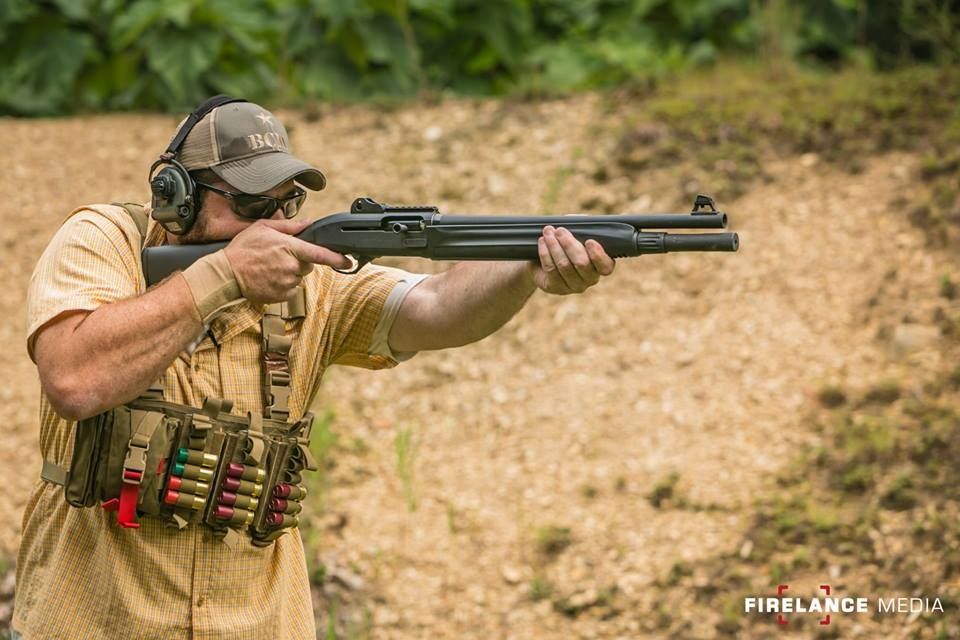
Selecting a home defense shotgun over an AR-15 can be a practical decision based on personal comfort, enjoyment, and the amount of training and experience you have. With a diverse range of reliable shotguns available for home defense, we consulted with Steve “Yeti” Fisher of Sentinel Concepts to explore the best options. In this discussion, we cover home defense shotgun do’s and don’ts, and essential considerations for anyone considering the switch from an AR or pistol.
Q: Steve, it feels like the home defense shotgun has been having a resurgence of late. I’ve seriously considered adding a Beretta a300 to my collection in a home defense role. What’s your opinion on the shotgun’s enduring popularity?
Steve “Yeti” Fisher, Sentinel Concepts – I think a lot of it is because it is “America’s gun,” within reason. Everyone has a shotgun if they hunt, or shoot trap/clays. There is nowhere I go that I don’t run into people who own a shotgun. It’s just such a multi-purpose, practical gun. That’s the beauty of a shotgun – it can do it all, other than precision long distance.
It’s also a gun that is still ‘socially acceptable’ in all 50 states. It’s not quite one of those guns that have been banned, or even on the radar for being banned in many places. That said, some shotgun configurations may fall into that based on your state.
Q. Can you talk about the unique challenges of teaching a shotgun class and what are the benefits of attending?
Steve “Yeti” Fisher, Sentinel Concepts – The interesting part of teaching a shotgun class is defeating the stigma of its punishing recoil, teaching what a properly fitted “self-defense/home defense shotgun” is, what is truly a viable load/load pattern, zeroing, etc.
The biggest challenge on my side of the house is simply transporting a lot of good steel to the ranges and having good steel to use. Some steel does not do well with buck or slugs, and many ranges just have cardboard. Cardboard gets old fast, as it doesn’t last. So, my most significant challenges are the ranges, range availability, and the targets. My other challenge is just getting students to understand that the shotgun isn’t going to punish them.
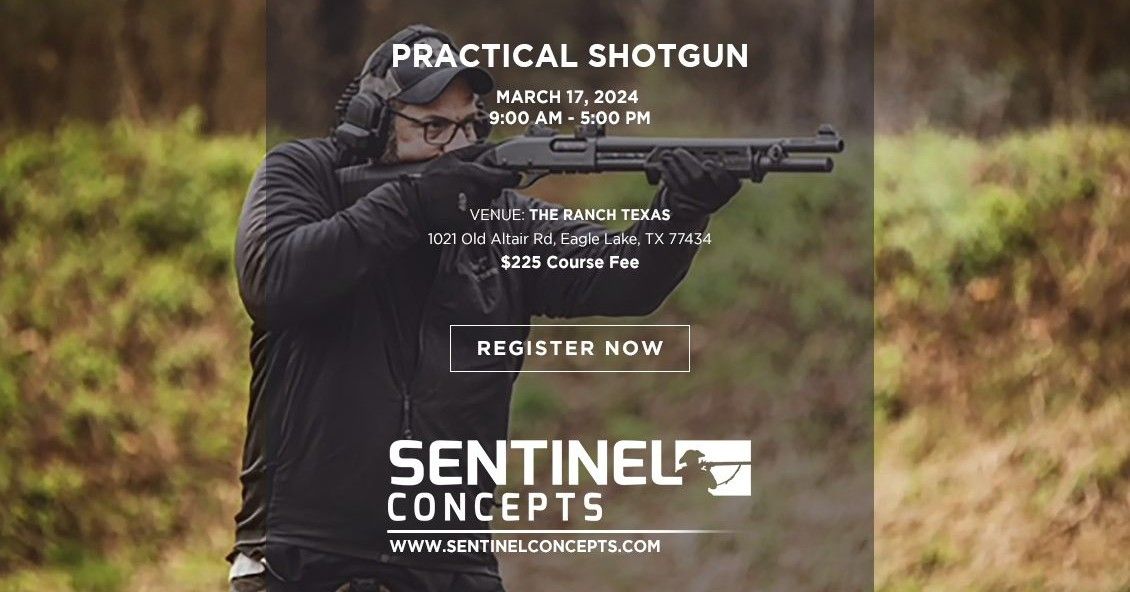
Q: Your new schedule of training courses is now online, correct?
My 2024 schedule is up, and I will be running shotgun courses across the country along with my other courses. I teach shotgun because there is still a need for it. Your readers should know that it’s not just me that teaches shotgun. Seek out a class from Rob or Matt Haught, or Cougar Mountain Solutions. Look at Chris Fry at MDTS Training, or the guys from Green Ops. If I am not coming to your area, some of these people might be. If you’re considering using a home defense shotgun, you should actively seek them out.
Q: Speaking of Rob and Matt, can you describe how revolutionary the “push-pull” technique, popularized by Rob and Matt Haught, has been for shotguns?
Steve “Yeti” Fisher, Sentinel Concepts – It’s been massive. Matt and Rob Haught are very dear friends of mine, and we just finished speaking at the Vang Comp Thunderstick event in Las Vegas. The “push-pull technique” can be described as isolating recoil by “stretching the gun” or “pulling the gun apart.” It mitigates the recoil impulse of the gun. I would caution that it is often taught incorrectly by parroting instructors who have never taken a class from Matt or Rob, or just really don’t understand it.
The first time I heard about the push-pull technique was before I knew Rob, back in the 90s. It helps those using pump shotguns and those using gas guns to help keep the recoil from beating them up. It brought the shotgun to the next level regarding recoil management.
A lot of guys also subscribe to another technique, which can be described as a “pull, pull, lean” or “pull, pull, load,” where they will pull the shotgun in tight, front to back, and then load into the gun from the shoulder and get a very aggressive stance behind it. This is a natural thing for people to do, and some prefer it, even when taught both methods.

Q: Can you talk about the Thunderstick event and what it represents?
Steve “Yeti” Fisher, Sentinel Concepts – Last year was the first year we did it; it was a very limited course. It was an open invitation to a lot of industry people that we knew to testbed ideas. We then opened it up to open enrollment.
We just wrapped up our second annual event this year, which was amazing. We had more than 70 shooters from all over the country (and some other places), which was great to see. We had a great mix of law enforcement, average citizens, men, and women. There were true shotgunners, but also some who rented a shotgun and bought ammo to attend the event and learn because we had the nation’s top six or seven shotgun instructors. We’re going to add more next year.
Q: What are the common mistakes you see when beginners come to a class with a shotgun?
Steve “Yeti” Fisher, Sentinel Concepts – Rob Haught and I have had some discussions on this, and for a home defense shotgun, I don’t need a +2 or +3 round extension on the gun. I prefer my guns to be balanced. I like a five-shot gun with maybe a +1 to make it six rounds. I like the balance from an 18 ½ inch barrel and that 5-6-round capacity. It balances, is light, and is portable if I need to move and do things with that gun.
Another common mistake is that people try to put too much garbage on their home defense shotguns. They try to turn them into M4s, but they are not. For example, at a recent shotgun roundtable, we discussed bandoleer slings and how they were a bad idea. If you’ve got 5-6 rounds in the gun and another few in a sidesaddle, you’ve got more than enough ammunition for a home defense shotgun.
If you look at statistics, it’s 1.5 rounds fired in most home defense situations. For a law enforcement situation, similarly, it’s a round or two rounds fired. You’re not taking on a zombie horde with a home defense shotgun. Yes, there are home invasions where you are taking on multiple people, but having a 5-6-round gun is very comforting to me.
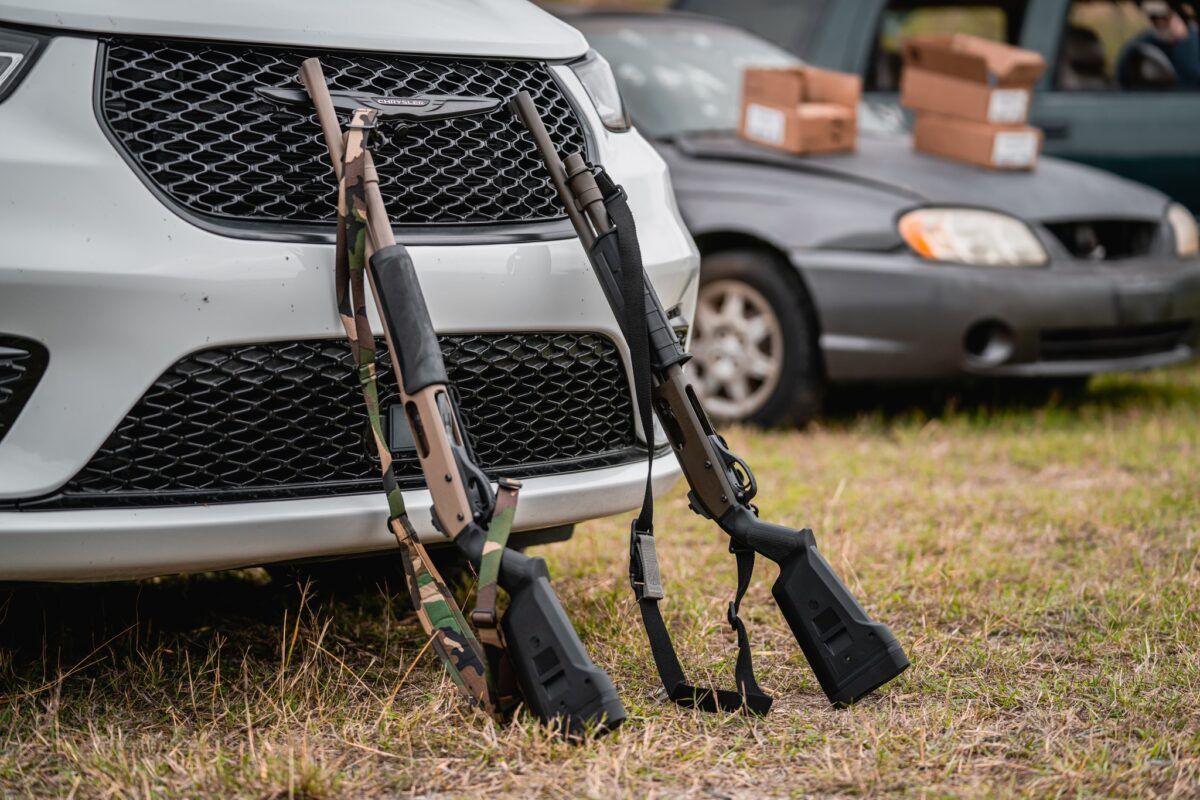
Regarding the setup of the home defense shotgun, at its most basic, it should have a white light for positive identification. As for sighting systems, that’s a personal preference. I don’t care if it’s a big dot (shotgun bead), red dot sight, or ghost rings as long as it’s visible.
Again, you need to avoid putting too much garbage on the gun. Things like heat shields, top-folding stocks, and other such goofiness don’t need to be on a shotgun. Frankly, it’s not my place to judge. Still, for the average person setting up a home defense shotgun, I would tell them to keep it simple, focus on a light, visible sighting system, and, if they feel comfortable, get a few pieces of Velcro and add a sidesaddle to the gun. If they focus on these basics, they’ll be just fine.
Q: What’s your take on stock size (length of pull) and ensuring you fit the gun?
Steve “Yeti” Fisher, Sentinel Concepts – For a home defense shotgun, I think it is essential that you “fit” the gun. I grew up shooting trap, skeet, and waterfowl hunting, and I experienced firsthand the adverse effects of having a stock that was too long. The factory 14” length of pull stocks are terrible. I do not know why companies still put these things on guns. Most everyone will be better suited with a shorter length of pull. Now, there is some discontent within the industry about this, especially from those on the internet who run super short stocks.
Some run these little 10” stocks because, back in the day, due to instructors like Louis Awerbuck – God bless him; Louis Awerbuck was an amazing human and incredible shotgun instructor – However, people need to understand Louis was around 5’3”. He was a smaller-statured dude but big in everything else. He was an amazing guy. There are pictures of Louis and me together, and the top of his head comes up to my chest, and I’m 6’4”.
A gun that fits an instructor like Louis Awerbuck better would not necessarily work well for me. While I could use it if I had to, with a short stock, I find that I am cramped with the gun and lose a lot of my peripheral vision and dexterity.
A lot of this also comes back to the Alaska State Troopers. Many years ago, they had requested a short stock, and Hogue came up with one for them that was around 10” long. Why? It was because they wore big, bulky parkas for cold weather. Combining their bulky armor with the mass of their parkas changed their length of pull quite a bit.
For your average person using a shotgun for home defense, I think they are best served with a stock that gives them a 12-13” length of pull. When I poll my students in class, this is where I most often find them comfortable with the shotgun. They can then reach the forend correctly on a pump action and work it well without short-stroking the gun. For years, the long and incorrect length of pull changed body position mechanics and forced people to reach differently. This meant they were not getting full travel on the forend.
Q: What’s a good replacement stock for a home defense shotgun?
Having a gun that measures up to you is important; this is where the Magpul stock comes in. That particular stock is a great contender for both a home defense shotgun and a hunting gun. You can adjust the stock with a screw and spacers, allowing it to range from around 11 to 14 inches, depending on your recoil pad configuration.
Remember too, that setting the gun up properly for anyone who might be in the house and have access to it is important. I’d recommend erring on the side of caution by having a shorter stock. Generally, I tell people that 12.5” to 13” will do well for everyone. Even the biggest person can shoot a short stock. It’s not always the “best” for them, but they can always use it versus the littlest person using the longest stock. That combination of a smaller person with a long stock is far from ideal.
Another stock that has come out that is a contender is one by Chisel Machine. They came up with a “pistol grip” stock with an adjustable length of pull that does an amazing job. I am not a “pistol grip” user, but their stock does an amazing job.

Q: Moving on, many friends tell me they have purchased a Shockwave. I’ve always felt that was a mistake, and they bought a gimmick. Am I off-base? What is your opinion on these smaller shotguns with the birds-head type grips?
Steve “Yeti” Fisher, Sentinel Concepts – They are decent “confined space” guns. If I lived in a 400-square-foot apartment or, like a buddy of mine, lived half of the year on a boat and the other half of the year in an RV, it might be worth considering. For me, it is a very limited application home defense shotgun that is best fielded by an end-user who has a lot of time with it.
That said, it is a gun that is pretty easy to develop a natural point within a short, confined space. It will take a bit of practice, but it’s well-managed. I own one, and it’s a Vang Comp version of the 870. It’s an amazing gun, and it does an excellent job for me in the limited capacity I want – specific to my small armory/workshop area. It is a very short, handy gun with devastating lethality at close range. It’s not for everyone, but it is a lot of fun and is an excellent tool if used properly, just like anything else. It has benefits and shortcomings.
Q: With the advent of the newer Benelli shotguns, the Beretta 1301, a300, and the Mossberg 940, has the semi vs. pump shotgun argument been put to rest?
Steve “Yeti” Fisher, Sentinel Concepts – I can remember sitting in duck blinds with my dad and his friends, and there was always a combination of pump shotguns and semi-autos. As long as the guns were maintained and had the correct ammunition, the semi-autos were just as reliable. I say that knowing the worst conditions you can imagine could often be found in a duck blind. (laughs) Those guns still worked, so for me, the pump versus semi-auto debate is dead.
Some of the semi-autos got a very bad rap early on – the inertia-driven guns, like the Benelli M1 Super 90 in a law enforcement role in the 80s and 90s, didn’t work well with certain ammunition. When we started putting sidesaddles on them and laser-device forends, it changed the inertia of the gun. Remember, these were not recoil-driven. The weight of things hanging off the guns altered the way they operated, along with the introduction, around the same time, of low recoil ammunition. That started the bad rap and gave the impression that pump guns were “better” and always “worked.”
Sure, pump guns work – until they don’t, just like a revolver. Anything can malfunction. A pump gun is generally more reliable and robust because it is manually operated, but user error can quickly make it unreliable.
Today’s modern semi-auto guns – the M1, M2, M4, 1301, a300, 1100, 11-87 police – have all been reliable when fed the correct ammo and maintained. I’d also include the Mossberg 940, which has been a fantastic shotgun for me over the past two years. I can say that the gun is absolutely outstanding.
The bottom line is there is no need to worry about using one over another as a home defense shotgun. I will say that a semi-auto is simpler easier – point and press the trigger – without worrying about racking the slide.
Q: What would you say to someone who uses an AR but is considering trying a shotgun for home defense instead? The a300 Tactical is on my very short list of guns I want.
Steve “Yeti” Fisher, Sentinel Concepts – My advice is to get the gun, get some dummy rounds, and practice loading exercises. That said, this isn’t overly critical, as most will get the gun, stuff it full of shells and put it in the corner of the bedroom, or position it in their safe. The gun is going to be set and forgotten.
There is nothing wrong with the M4 chambered in 5.56 or .300 Blackout. For me, though, the sheer devastation of a home-defense shotgun launching 9, 12, or 16 pellets with a single press of the trigger, hitting at upwards of 1,600-1,800 foot-pounds of energy in a devastating pattern is amazing.
The home defense shotgun has such great lethality that I might not have to press the trigger more than once. You cannot argue with the sheer devastation that the shotgun puts out. It’s probably the most lethal tool we have, per press of the trigger, for a home defense gun.
Q: How much ammo do I need to purchase to test the pattern on a home defense shotgun, and what am I looking for exactly?
Steve “Yeti” Fisher, Sentinel Concepts – The first thing I will do is measure the average inside my house. I have polled several thousand of my students over the years, and the average is somewhere between seven and ten yards.
I tell people to buy 3-4 boxes of different buckshot – random stuff from Remington, Hornady, Federal, Sellier & Bellot – it doesn’t matter. Find a load that gives you a consistent pattern across multiple shots. I generally use a B-8 Repair center target. If I can take whichever load and press the trigger for 3-5 rounds, if all the pellets are generally within the 5 ½” – 6” circle at my max distance, that’s a win. Most guns will do that, on average, at 7-10 yards.
While FliteControl is amazing, it is not always the correct ammo for use in a home defense shotgun. We touched on that the last time we discussed shotguns. The FlightControl pattern is a little too tight and too dense. I like a load that gives me that 5-5 ½ pattern at my max range. Why? Aiming errors. I have seen stress cause misses many times in my classes, and I think having that spread is a good thing.
Q: I get confused about FliteControl. I see it mentioned so often that it seems like the thing to have, yet for home defense, it looks a lot like firing a slug due to shot density. To clarify, when would one consider FliteControl for a home defense shotgun?
Steve “Yeti” Fisher, Sentinel Concepts – I’d consider FliteControl If you’ve got long hallways or engagement outdoors – law enforcement engagements, for example. If I am indoors, what do I need the pattern of my home defense shotgun to be? I need it to be consistent, have good pattern density, and have good pattern overlay. That spread also allows me to make up for any margin of error as a shooter or someone not well-versed with the gun who might flinch or pull a shot. Remember, a shotgun gets its magic from its spread and the pattern it produces.
When I look at the worst-case scenario – I think of low light engagements with a positive target ID via a white light, things that are moving, things that are moving and potentially shooting at me, perhaps I am moving while they are shooting at me. I want a little more margin of error from my home defense shotgun for aiming issues in that situation. This is where the shotgun wins. The home defense shotgun allows us not to have to be as precise with our aiming. It lets us float the sight picture a bit more and have an acceptable sight picture at the time and space that we need it in.
Q: Anything else I have not asked you that you think readers should know about home defense shotguns?
Steve “Yeti” Fisher, Sentinel Concepts – Yes. My house guns, both carbine and shotgun, do not have slings. I am not patrolling out in the world with one of those guns. I am probably bunkered in my bedroom or hallway, taking up a defensive posture with the gun, and that’s it. I am not going anywhere with that gun, and I do not need it attached to my body as if I were outdoors or out running around.
If I am out, walking about, yes, my shotgun has a sling, but for a house gun? My gun does not have a sling. I discussed this idea with Rob Haught at the recent Thunderstick event. We don’t require a sling inside the house. Some people might find this idea great, and others may not. It’s their personal choice.
Above all, to close with, I’d remind everyone to keep their home defense shotgun simple and choose a good load selection.
###

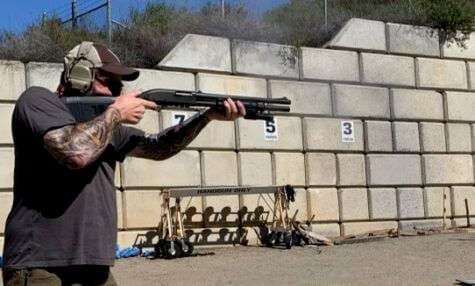


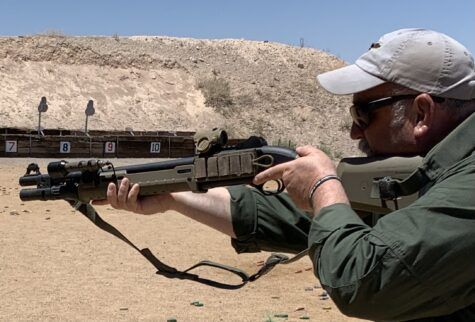
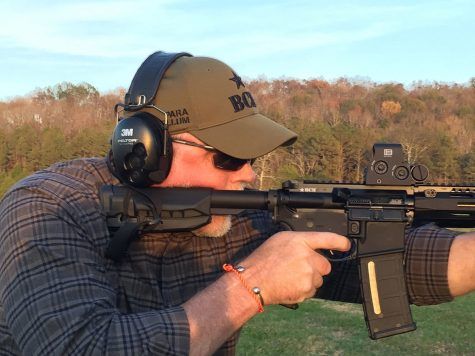
That’s a lot to take in! Tons of great info, especially with the video links. I can tell, I need to re-read this in another day or so, just to make sure I’m able to digest everything. I’ll make sure to bookmark this page and come back to it for future reference. Great stuff!!! Thank you